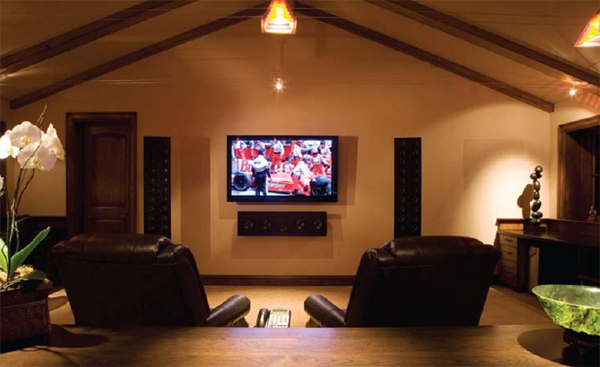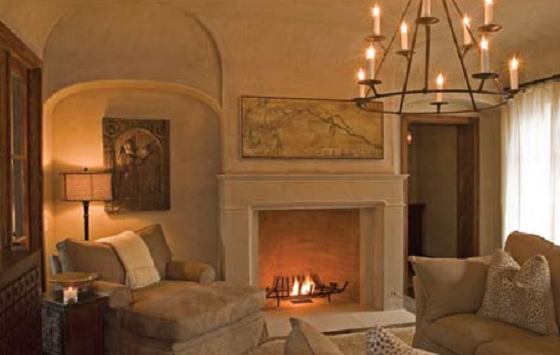Bob Dylan’s The Times They Are a-Changin’ was a favorite song in 1964, and it was usually played on a turntable with fold-out speakers. Homes were simple in 1964: a stack of LPs, an AM radio, a console TV with fewer than five channels, a wall thermostat, off-and-on light switches, dial telephone, and no home security or surveillance. But the times have changed, and the change in homes is most pronounced and dramatic in the area of home electronics. Being connected and interconnected is a way of life that has broad ramifications to our homes and how we live. Residential electronics have up-ended entertainment, climate control, communications, security and automation to such a degree that if it were possible for a 1964 LP listener of Dylan’s song to time-travel to today and view the systems available in homes, the time-traveler would feel that centuries instead of two generations had elapsed. Imagine trying to explain turning on a home’s lights and cameras four states away via a wireless Internet connection or a cell phone and observing what was going on—it would be unfathomable. Just as systems have changed, so has how we build homes. While a 1964 turntable, AM radio and TV just had to be plugged into the wall sockets, now the need for cable, satellite, Internet, sensors, monitoring, controls, acoustics, reception, and back-up systems have to be planned, designed, and anticipated at the very beginning of a home’s design. Now heating, cooling, geothermal, snow melt, and phones come under the heading of electronic integration. Necessity of technology “We have a new breed of client, where technology is a way of life,” explained Jess Goitiandia, owner of Audio Innovations. He continued, “Success is based on the involvement of the homeowners early, where they define their integrated electronic needs up front for the budget and the schedule. Our world is becoming one of electronic conveniences, and underlying the convenience and ease of operation by the homeowner is careful, coordinated planning.” “A house is transforming into a computer, just as cars did in the late 1990’s,” observed Matthew Graff of Sound Wave. Luke Macdonald, CEO and owner of Soundwave, completely agrees. “It is very important that integrators get in the design process early with the architect, and make electronic integration a design parameter,” he added. Liam Grant, also of Soundwave, noted that they were willing to consult during the design process, even though there may not be a commitment to do the final installation. “If a qualified home integrator works on the design with the client and their team, they will walk out with a better understanding of what they may need up front.” A local home that recently won Electronic House’s national 2010 Integrated Home of the Year award exemplifies some of the consumer demands. Kevin Carey of Home Media, Inc. designed the installations in the 30,000 square- foot home. “Honestly, there are more complex electronic requirements in a home like this than in the new ice rink that is being built. This home has an Apple-based control system where you can tell if doors are open, closed, or locked, which is important to a family of five active kids. Cameras watch the swimming pool, window treatments are motorized, and there is whole-house audio. The home of tomorrow is happening today.” Kevin Carey added another consideration. “Homes are also workplaces. People with home offices need technology to do their jobs well. This includes Wi-Fi, Skype, and video-conferencing. Integrators can enhance cell phone reception. Teleconferencing is an area of rapid technological innovations that need to be anticipated, planned for, and wired.” With wryness he added, “Wiring is important. Wireless communication only works with good wiring.” Anticipating Technology With such a rapidly advancing field, there is a necessity to anticipate technology. Rework due to poor design quality is expensive, and in some cases nearly impossible. “It’s important to anticipate getting wiring to areas that you might not get access to later,” noted Liam Grant. “If there is a slab and no crawl space, or if it requires access to an adjacent condominium to wire speakers or TV cables, it will be difficult at best, and maybe impossible. A few dollars spent up front can save thousands later.” Sound Wave has been involved in some recent condominium projects where potential television or speaker locations have been pre-wired and covered with a plate. “It’s a great selling feature to say the units have been future-proofed.” Kevin Carey finds the new, emerging technologies are the exciting and interesting aspect of his job. Internet television is now on the forefront with Apple TV, Google TV and others, and integrators are finding new applications for I-Pads as controllers. “Another new parameter is Smart Grid, where the electric utility companies lower rates at night. Automation can allow appliances to run at night via Smart Grid. The biggest challenge continues to be to maintain user simplicity given the complexity of even normal new homes.” With so much specialization, one of the changes that challenge traditional contracting models is the additional training required over standard electrician preparation for low-voltage applications. “Yank on certain Home Integration Specialists As homes get more complex and users want things simple, there is more pressure on the home integration specialist to perform at an ever-increasing level. A homeowner wants things to work the day they move in. This is why homeowners, contractors, architects and designers are asking home integration specialists to join their team at the conceptual stage of the project and to work with them hand- in-hand. The home integration specialist stays with the homeowner for service and to add new technology and ensure their ongoing enjoyment of the home. Editors Note: This is the first of two articles by Western Home Journal showcasing home integration–the electronics for music and entertainment, communications, and controlling the operating and security systems in homes. It is a field to watch in terms of rapid advances and its important role at the onset of a home’s design. |
[bannergarden id=”1″] |
| [bannergarden id=”2″] | |
| [bannergarden id=”3″] |

 types of cabling or hit it with a stable or a hammer, and you have destroyed it,” commented Jess Goitiandia. “Electricians use hammers with staples, where AV specialists use Velcro, zip ties, and screws. Most of this cabling is designed for less than 25 pounds of pulling pressure, so by hitting it or pulling too hard, you destroy it.”
types of cabling or hit it with a stable or a hammer, and you have destroyed it,” commented Jess Goitiandia. “Electricians use hammers with staples, where AV specialists use Velcro, zip ties, and screws. Most of this cabling is designed for less than 25 pounds of pulling pressure, so by hitting it or pulling too hard, you destroy it.”